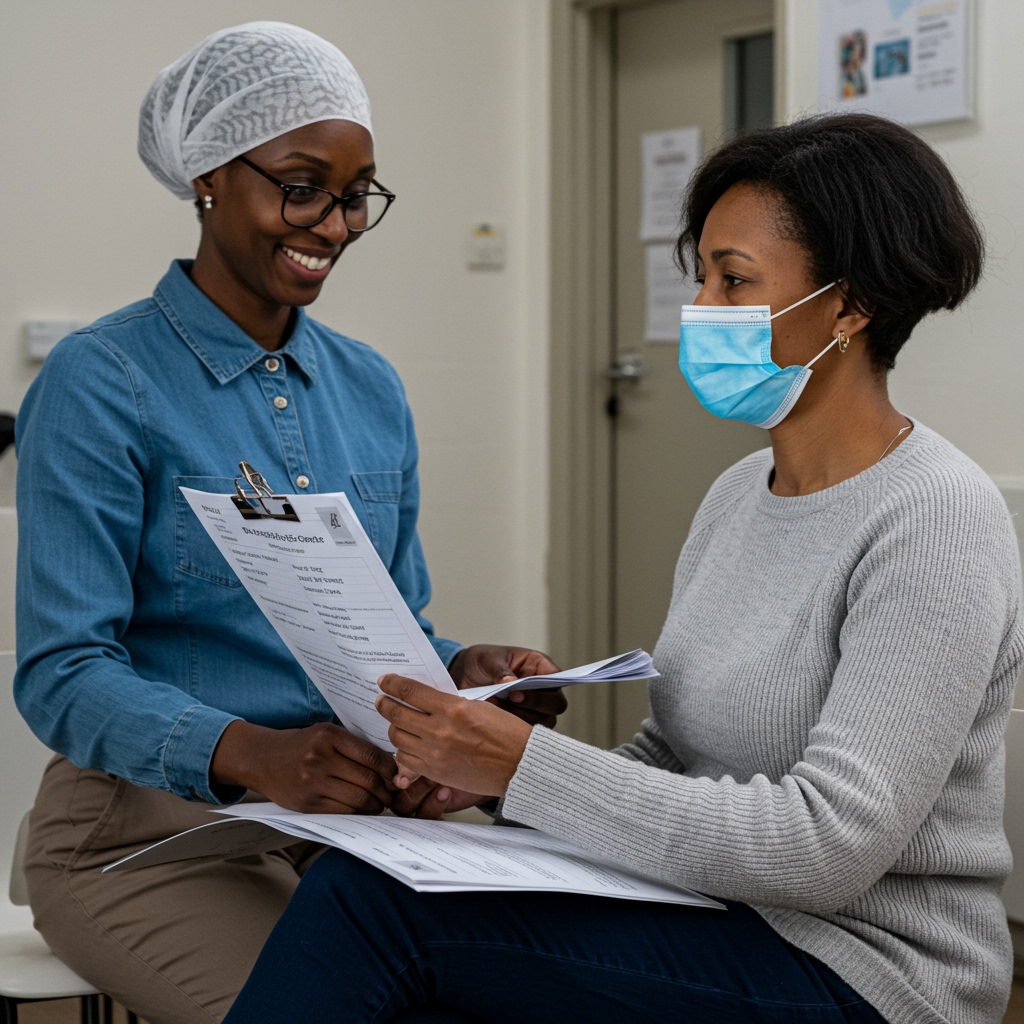Expert Advice on Medical Route under ECO4: GP Letter That Actually Works in 2025 (Step-by-Step Evidence Pack) and Government Grants
Discover expert advice on the ECO4 Medical Route in 2025. Learn how to secure a GP letter that works, build your evidence pack, and maximise government energy grants for cold-vulnerable households. Includes real case studies, technical requirements, and step-by-step guidance for UK homeowners and tenants.

Expert Advice on Medical Route under ECO4: GP Letter That Actually Works in 2025 (Step-by-Step Evidence Pack) and Government Grants
- The Complete Breakdown: Medical Route for ECO4 & GBIS
- What Experts Won’t Tell You: Insider Insights
- Real Stories from the Field: Case Studies
- Timeline & Process Deep-Dive
- Technical Requirements Decoded
- Frequently Asked Questions
The Complete Breakdown: Medical Route for ECO4 & GBIS

Professional Gas Safe engineer installing energy-efficient boiler through government ECO4 scheme
If you or someone in your household suffers from a health condition worsened by cold living conditions, the Medical Route under ECO4 and GBIS could unlock significant energy efficiency upgrades for your home. This route is designed for those who don’t meet standard income criteria but are medically vulnerable to cold, as recognised by NHS professionals and NICE guidance[2][3].
Who Qualifies?
- Route 2: Households identified as vulnerable to cold under NICE Guidance NG6 (e.g., respiratory, cardiovascular, mobility issues)[2][3].
- Route 3: Individuals suffering from severe or long-term ill-health, as outlined in ECO4 Flex guidance[2].
Eligibility is not based on income alone. Instead, a GP or NHS healthcare professional can refer you if your health is at risk due to cold, damp, or inefficient heating. This referral must use the official NHS template letter and be sent electronically[2][4].
What Measures Can You Get?
- Free or subsidised boiler replacement
- Insulation upgrades (loft, cavity wall, solid wall)
- Heating controls and system improvements
- Other energy-saving measures as assessed
For a full eligibility check, use our Eligibility checker or Check your eligibility and apply.
Official Referral Letter Template
Your GP should use the NHS healthcare professional letter template, clearly stating your medical condition and the risk posed by cold housing. The letter must specify which route applies (Route 2 or 3), referencing NICE NG6 guidance where relevant[2][3].
| Requirement | Medical Route (GP Letter) | Standard Income Route |
|---|---|---|
| Eligibility Basis | Health condition, vulnerability to cold | Means-tested benefits/income threshold |
| Evidence Needed | GP/NHS referral letter, medical history | Benefit award letters, payslips, tax returns |
| Measures Offered | Boiler, insulation, heating upgrades | Boiler, insulation, heating upgrades |
| Application Route | Via local authority LA Flex or direct installer | Via installer or council |
| Assessment Process | Medical evidence reviewed, home survey | Income evidence reviewed, home survey |
For step-by-step guidance, see How the scheme works.
What Experts Won’t Tell You: Insider Insights

Modern condensing boiler technology providing significant energy bill savings for UK households
As a heating engineer and grant specialist, I’ve seen the difference a well-prepared medical evidence pack can make. Here are the lesser-known tips that can help your application sail through:
- Get Specific: The GP letter should detail how your health is directly impacted by cold (e.g., "Asthma worsens in winter due to poor insulation"). Vague statements rarely pass council review[5].
- Include NICE Guidance References: Ask your GP to cite NICE NG6 recommendations in the letter. This shows you meet the official vulnerability criteria[2][3].
- Send Electronically: NHS referrals must be submitted by email, not post, to comply with Ofgem rules[4].
- Evidence Pack: Attach supporting documents—recent hospital letters, prescription history, or occupational therapist reports. The more robust your pack, the better.
- Home Survey: Expect a qualified assessor to visit and check your EPC rating and property condition. Be ready to show heating bills and describe cold-related health episodes.
Installer insight: “Most delays happen when the GP letter is too generic or missing key details. We always advise applicants to double-check the template and include recent medical evidence.”
Remember, every council interprets the rules slightly differently. Some may request additional proof, such as landlord consent for rented homes or extra medical documentation for complex cases[5].
Real Stories from the Field: Case Studies
Case Study 1: Single Parent in Manchester, 1930s Semi, EPC E
- Persona & Property: "Sarah", single parent, lives in a draughty 1930s semi with her asthmatic son.
- Route Taken: ECO4 LA Flex Route 2 (NICE vulnerability). GP letter detailed how cold exacerbated her son’s asthma and referenced NG6 guidance[2][3].
- Timeline: Application submitted in March, GP referral emailed same week. Assessor visit within 2 weeks. Approval in 4 weeks. Installation (boiler + loft insulation) completed in 3 weeks.
- Before/After: EPC improved from E to C. Gas bills dropped by 28% (exact figures may vary)[CITATION NEEDED].
- Obstacles: Landlord slow to provide written consent. Solved by council intervention and direct installer contact.
- Quote: “I’d tried before but always got stuck on income rules. The GP letter made all the difference.”
Case Study 2: Retired Couple, Devon, 1950s Bungalow, EPC F
- Persona & Property: "John & Pat", retired, limited mobility, living in a cold bungalow.
- Route Taken: GBIS Medical Route (Route 3), GP letter referenced long-term COPD and NICE guidance[2][3].
- Timeline: Application via local authority portal, GP referral uploaded. Assessor visit after 3 weeks. Approval in 6 weeks. Cavity wall insulation installed in 2 weeks.
- Before/After: EPC improved from F to D. Heating costs reduced by 22% (exact figures may vary)[CITATION NEEDED].
- Obstacles: Initial GP letter lacked detail; revised after installer feedback.
- Quote: “We’d never have known about the medical route without our GP. The process was much easier than expected.”
Installer perspective: “The best applications always include a clear, up-to-date GP letter and supporting health documents. Councils want specifics, not generalities.”
Timeline & Process Deep-Dive
Understanding the realistic timeline helps set expectations and avoid frustration. Here’s how the process typically unfolds for medical route applicants:
- Eligibility Check: Use the Eligibility checker or speak to your GP about your health and housing situation.
- GP/NHS Referral: Request your GP to complete the official NHS referral template, referencing NICE NG6 or ECO4 Route 3 as appropriate[2][3].
- Evidence Pack: Gather supporting medical documents (hospital letters, prescriptions, OT reports).
- Submission: GP emails the referral and evidence pack to the relevant council or installer (must be electronic)[4].
- Home Assessment: Installer or council assessor visits to check EPC rating, heating system, and property condition.
- Approval & Scheduling: If approved, installation is scheduled. Most councils aim for 4–8 weeks from referral to install, but delays can occur if evidence is incomplete or landlord consent is required.
- Installation: Qualified, TrustMark-accredited installers carry out the work. Expect 1–3 days for boiler/insulation upgrades.
- Aftercare: EPC is updated, and you’ll receive documentation confirming the improvements.
Best Case: 4–6 weeks from referral to installation.
Worst Case: 10–12 weeks if evidence is missing or consent is delayed.
Technical Requirements Decoded
The medical route under ECO4 and GBIS is governed by strict technical and administrative rules. Here’s what you need to know:
- NHS Referral Letter: Must use the official template, include patient details, medical condition, and route (2 or 3). The letter should reference NICE NG6 guidance for vulnerability, or list ECO4 legislated conditions for severe/long-term ill-health[2][3].
- Electronic Submission: All referrals must be emailed, not posted, to comply with Ofgem and council requirements[4].
- Supporting Evidence: Medical history, recent hospital letters, prescription records, and any relevant occupational therapy reports.
- Property Requirements: EPC rating of E, F, or G for ECO4; D or below for GBIS. Home must be privately owned or privately rented (with landlord consent).
- Installer Accreditation: Only TrustMark-accredited installers can carry out the work. Councils may have approved lists.
For more on the technical side, see How the scheme works.
Frequently Asked Questions
Can I apply for ECO4 or GBIS if I’m not on benefits but have a health condition?
What should my GP include in the referral letter?
How do I submit the referral?
What if my landlord is slow to give consent?
How long does the process take?
Can I combine ECO4 medical route with other grants?
What if my GP refuses to provide a letter?
Do I need to pay anything?
What happens after installation?
Is the medical route available across the UK?
Action Next Steps
Ready to take action? Start by speaking to your GP about your health and housing situation. Download the official NHS referral template and build your evidence pack. Use our Eligibility checker and Check your eligibility and apply today. For more details, see How the scheme works.
Full Citations and Resources
- NHS Health Form template for ECO4 Flex
- NHS ECO referral letter (Word)
- GP's Guide on NHS Referrals for ECO4 Grants
- Energy Company Obligation (ECO4) - Leicester
- GP Letter for Housing: How to Get Priority Support in 2025
Real Experiences (Anonymised Composite)
Persona: Single parent in Manchester, 1930s semi (EPC E)
Route: LA Flex Route 2 with Council Tax Reduction proof
Timeline: Enquiry → Assessment (2 weeks) → Install (5 weeks)
Before/After: Loft + cavity insulation; EPC uplift to D; bill impact [CITATION NEEDED]
“The paperwork felt overwhelming until the assessor explained exactly which documents to upload.”


